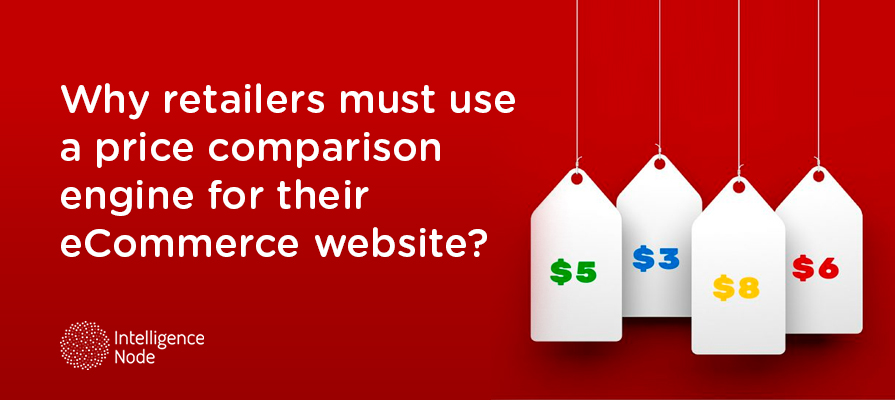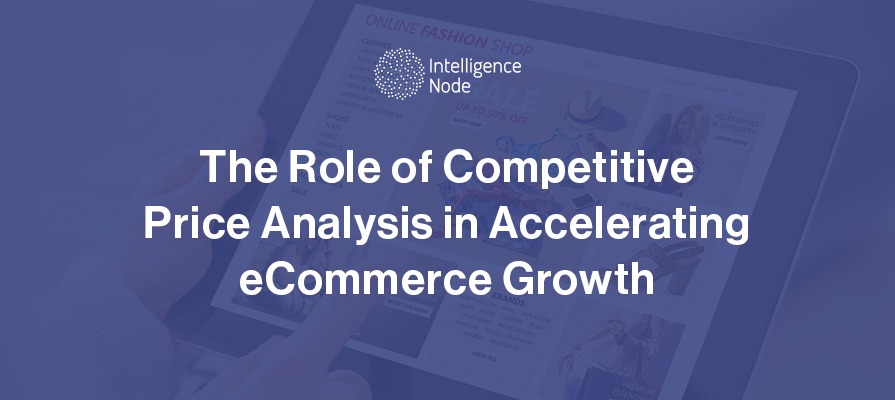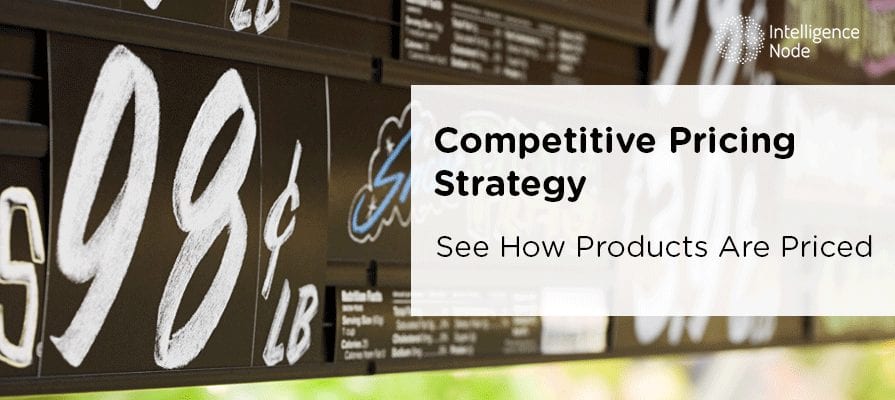As you develop your online business, you’ll need to exploit a variety of strategies and tools to boost the growth of your eCommerce website. It’s all about expanding your scope and positioning your products and services before potential customers. Marketing campaigns can prove to be very beneficial, but have you also considered leveraging Price Comparison Engine?
Price Comparison Engine’s (or PCEs) – also called by several other names like price comparison websites, price analysis tools, or comparison shopping engines- are a way for you to get your products in front of consumers that are ready to buy. These “channels” are an amazing way to develop your image and get new leads.
How does Price Comparison Engine work?
For consumers, a Price Comparison Engine like Shopzilla or Google Shopping essentially acts like a search engine that shows products side-by-side and compares features like product images and pricing. For the business, they typically charge a fee and then require you to submit product photos, descriptions, pricing, and other information in order for your products to show up in the relevant searches next to other comparable products.
Price Comparison Engines have been around for about as long as we’ve been using the web. One of the pioneers that was popularly used was BargainFinder, which was developed in 1995. Soon after which other Price Comparison Engines were developed. A few, as Junglee, were bought by bigger organizations like Amazon. And another popular one called NexTag, had a decent run, however, in the end, tumbled to stiffer competition.
It’s obvious why customers shopping online love using price comparison engines, but as an eCommerce retailer how can you benefit from price comparison engines? While it may seem counterintuitive to place your products in line with your competitors by using a Price Comparison Engine but the reality is that this strategy can help give you important competitive insights and accelerate sales.
PCEs don’t simply just help customers choose the best product – they also offer you, as a retailer, an abundance of data about the present market place and how your brand and/or products are positioned. Also, in your industry you can keep yourself updated on who’s selling what, cost and product trends, and even identify the shortcomings of your competitors or the product or service they’re selling.
In addition to helping you stay updated on market patterns, they can aid your organization in many other ways as well. First, since most customers who use Price Comparison Engine have made the decision to purchase, you’ve already won half the battle – your products are in front of a viable buyer. Now the customer is just looking to buy the best product at the best price. This is your opportunity to catch their eye and lead them to your site.
Second, and potentially the greatest advantage of using Price Comparison Engine, is increased traffic to your site which will improve your search engine result. You can leverage its SEO optimization as well. For small and medium-sized online retailers, this may be the fastest, and the most economical approach to help your company stand in line with the big brands.
Advantages Of Using A Price Comparison Engine
-
More Extensive Reach
Price Comparison Engines let you extend your reach past your site to discover new customers.
-
More Conversions
A potential customer may visit your site through the price comparison engine after they have seen a picture of the product, know the cost, and have read about your brand or site, etc. As buyers are bound to tap on postings that catch their attention, there’s a higher chance that the customers may like your product – helping you get a converted customer.
-
Discover Who’s Selling What.
Price Comparison Engine, enable you to analyze competitive products in one spot, giving you an overview of the market. You can search for similar products and discover who your competitors are and discover what makes every one of them unique- do they have a better customer service, for instance, or a user-friendly site? It merits discovering what else your rivals are selling, as well, since maybe your site is missing popular products and thus possibly missing out on lucrative business opportunities.
-
Stay Up-to-date With The Price Trends.
Retailers are continually changing prices in an attempt to stay ahead of the competitors. Regardless of the size of your business, your products can’t have outdated prices displayed on them. Now, it may not be your strategy to compete solely on price. But you still have to make sure that you’re offering a competitive price to your customers. Price Comparison Engine’s are a way to help you benchmark your offering in the market.
-
Look At All The Details.
Customers don’t generally pick the least expensive item; they also consider other additional information, including shipping costs, the service guarantee, and the popularity of the retailer, before they make the final purchase. So it’s beneficial for you to check out all these details of your competitors as well, along with the prices. Because after all, all your potential customers would be doing the same.
-
Check Out The Ratings And Reviews.
It is very important for any online eCommerce store to have a good reputation amongst its customers and many Price Comparison Engine encourage informal, word of mouth reviews through customer ratings. By observing the ratings and reviews posted by customers you can also find out which products are rated most highly.
In addition, most reviews incorporate criticism about the service they experienced along with the product’s review so you can look at how well your rivals are living up to their customer’s expectations. Here you can figure out if you could maybe do a better job!
-
Watch Out For Popular Products And Spot Market Trends.
Many price comparison engines choose top of the line products or highlight well-known products on their landing page. By spotting market trends, you can ensure you stock the correct merchandise and sell them at a competitive price to take full leverage of the increased demand.
-
Find Out Competitors’ Weaknesses.
At the point when you examine your rivals on PCEs, don’t just keep track of the price – check for the gaps, as well. Do you have something better to offer that can make you stand apart from your competitors? Focus on your companies’ strengths and make sure that the customers know how you’re better than the competitors.
Compare the USPs of your competitors and yours and make sure that yours are better or a level higher. Comparison sites can give you a decent overview of the industry. Find out if there’s a gap in the market for another product or service.
-
Increased Clickthrough Rates.
Some price comparison engines permit the customers to purchase without even a second’s pause, i.e., the customer can make the purchase directly on their site. However, most Price Comparison Engines will display your URL link so customers can shop on your site. This is a critical stage in the purchasing process when customers frequently reconsider their decisions.
To research your rivals completely, you have to navigate to their sites and see what they are doing right or wrong. Customers will be put off by sites that have badly-designed landing pages, poor navigation, inadequate security or require too many clicks to make a final purchase. Ensure your site is clear and easy to use.
-
The Customer Is Yours.
Last, there is a final distinct advantage you get by using price comparison engines over online marketplaces. At the point when a customer buys one of your products through an online marketplace, says Amazon, for example, they remain Amazon’s customer and not yours.
Because of this, you cannot interact with your customers in a meaningful way at a later stage. Or even transform them into a repeat customer. But with a price comparison engine, the customer is completely yours.
How to Make The Most Of A Price Comparison Engine For Your eCommerce Website
When you choose to start leveraging Price Comparison Engine like a new channel, you have to ensure you strategically use the information to transform customers from “simply looking” to “ready to purchase.” Customers at the beginning of their shopping journey are looking to accumulate general data that will help them with their inevitable decision to buy. At the beginning of the customer’s journey, ensure that they get all the details they need to realize that your product, service, or brand exists and is a top contender in the business.
When a customer knows what’s out there, they begin searching for explicit advantages including product durability, perceived value for money, and positive reviews of the product and service. Lead potential customers to your product by ensuring that the information is spread out in an easy-to-understand way, without any distractions to divert their mind from the important points that will assist them with settling on a choice.
At the point when the client is prepared to purchase, make it simple. Have the buy or “sign up now” button boldly shown and don’t complicate the purchase process. For example, don’t make the customers create a detailed customer account just so they can purchase one item.
Give them an alternative way to proceed as a guest on your site, and once they’ve entered all the important data necessary to make the purchase – make it simple for them to convert that data into their own unique customer account. It has been proven over again, that if you make the customer go through a lot of steps to create an account, they will likely exit your site before purchase – and worse, choose a different retailer who has a simpler transaction process.
Final Thoughts
To stay ahead in the eCommerce world, organizations need to discover ways to attract a fragmented consumer base and deliver what they’re searching for quickly and easily. Price comparison engine can be a very effective channel not only to grow sales but to stay ahead of your competitors.
In addition, employing these shopping comparison websites as part of your go-to-market approach gives you insights into important market trends quickly – thereby enabling you to spend time and resources in other areas promoting your company!
About Intelligence Node
Intelligence Node is a real-time retail price intelligence platform that empowers retailers and brands to grow profitability and margins using AI and ML data-driven competitive insights.





